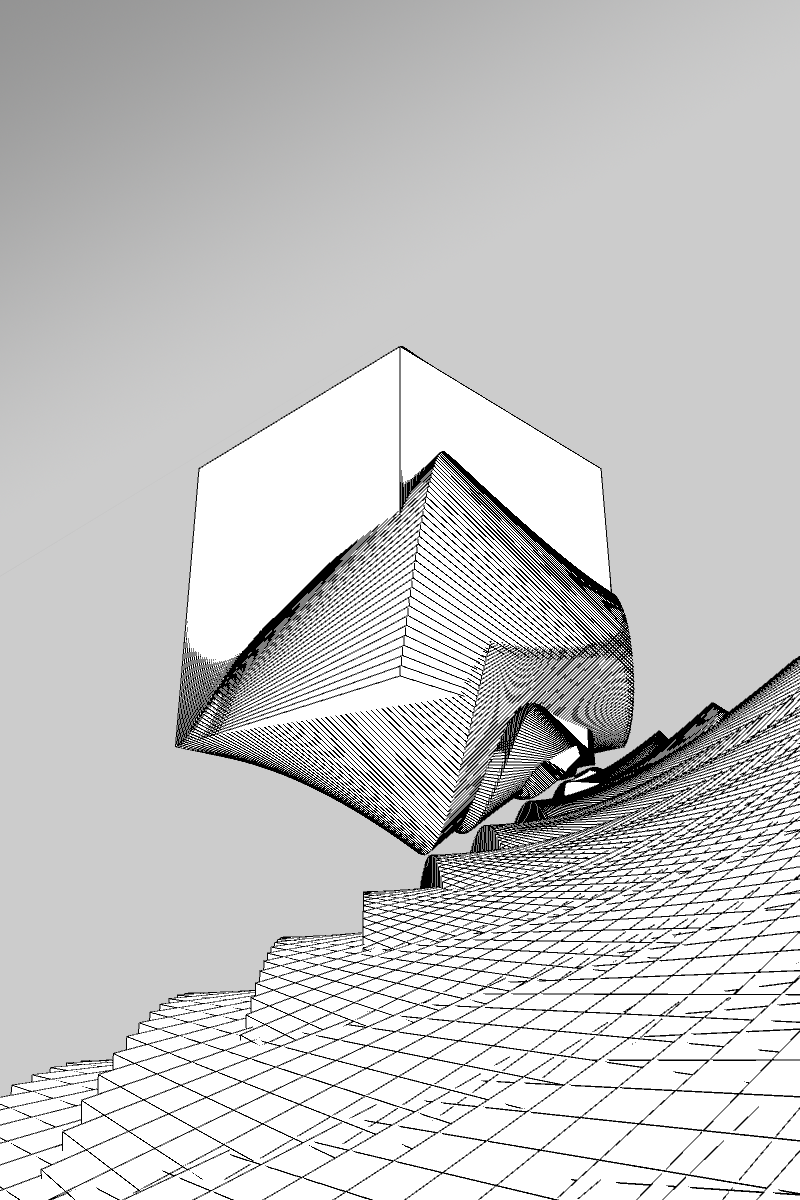
“A monument to Infinity”
source: https://www.reddit.com/r/generative/comments/efyzuz/a_monument_to_infinity/
Algorithmic art, also known as Procedural art, describes art which is made with the help of an Algorithm. For our usage an algorithm is a finite series of well designed instructions. Algorithmic art is still a fuzzy concept, as the usage of “algorithms” in art can be very widely interpreted. The category of Algorithmic art contains Fractal art and Computer Generated art but is itself a subset of Generative art, which includes other natural and physical systems interacting. It is also related to Systems art which is reliant upon natural and social systems. Algorithmic art has taken off with the advent of powerful computers, and can commonly be seen on display at ATLAS year round. As a computer scientist, algorithmic art is especially intriguing both because of its ability to bring the art world to me. Not only does it have intrinsic aesthetic value, but there is a simple elegance to being able to reverse engineer Algorithmic art pieces down to their basic mathematical principle And in the opposite sense, it can take simple mathematical principles and transform them into mind-melting works of art.

“Night Forest”
source:https://www.reddit.com/r/generative/comments/c1t61b/night_forest/
While popularized by computers, algorithmic art has also been present throughout history. If there’s an algorithm involved, the argument can always be made. One of the most popular examples is the Islamic geometric patterns used in architecture. The rules used give a pleasing order to the material involved. Another example are various Renaissance paintings that have used geometrical rules in the creation of their art (The example below is a Paolo Uccello piece which uses the orientation of the lances to give a linear perspective)


In fact, our in-class doodling exercise on Friday could be considered algorithmic art. We had to make triangles composed of parallel lines, and my thought process went like this:
- Starting from the corner of my notebook, draw a line that will make a medium sized triangle within the existing boundaries
- If the triangle is still too big, split it up into smaller triangles
- For each triangle, fill with parallel lines. The lines should in a different orientation from adjacent triangles
- repeat
These “rules” help to define a continuous reality in which the work exists. As humans, we are constantly analyzing inputs for patterns, so this order is essential design principle across the board from art to music to graphic design. The Aesthetic of the Algorithm is to give the patron something to latch on to, and to give beauty through simple patterns.


2 Comments. Leave new
Hey Kyle!
I think this aesthetic is really cool, and it’s relative to all forms of art. It’s so interesting that math can show this kind of beauty, and that there is really creative ways to use rules to make art. I especially think the last piece of work is really complex in how the artist found a mathematic rule to create that. This also reminds me of the studies on the Fibonacci sequence found in nature, where the pattern of rivers, trees, rocks, etc. naturally follow the mathematical pattern of the sequence. Really cool!!
I’m so happy to see someone talking about this! I really love how this kind of art can depict the beauty that can be found in mathematics. If this is a kind of art that you are really interested I would recommend reaching out to the Digital Fabrication professor Camila Friedman-Gerlicz! She’s an artist who has a degree in mathematics that she uses to make some really awesome pieces! Also, the youtube channel “3blue1brown” has some absolutely amazing visual animation of things like matrix multiplication that I think qualify as art.